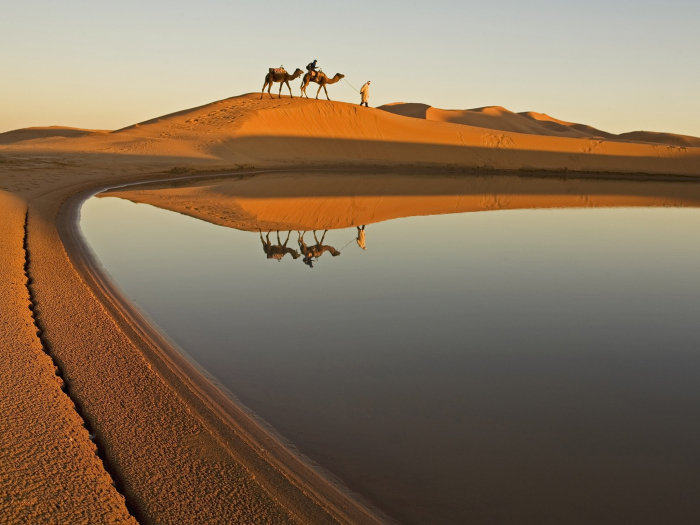Geographically speaking, most deserts are found on the western sides of continents or—in the case of the Sahara, Arabian, and Gobi deserts and the smaller deserts of Asia—are located far from the coast in the Eurasian interior. They tend to occur under the eastern sides of major subtropical high-pressure cells. These huge wheels of wind spiral clockwise in the Northern Hemisphere and counterclockwise in the Southern Hemisphere in the subtropics over the oceans; however, their behavior affects nearby continents.
Moist rising air near the Equator cools and condenses into clouds and, later, rain. As the current of air moves toward the pole, the air releases much of its moisture. By the time the current turns back toward the Equator, the air is descending. It becomes compressed and warmer, and its relative humidity falls further. Under these conditions, it is rare for clouds and rain to form. Add in a bit of wind to accelerate evaporation at the surface, and the continental regions below become extremely arid owing to the lack of available moisture. Deserts thus become dry.
You may picture sand and dunes when you think of a desert, but deserts can occur in colder areas too. Cold or frigid deserts—such as the Atacama Desert of Chile and some of the Asian deserts nestled within the Eurasian Steppe (such as the Karakum Desert of Turkmenistan)—frequently dip below freezing during the colder months of the year. In addition, one extremely large desert exists whose “sands” are actually made of water. This desert isn’t in the part of the ocean immortalized by Samuel Taylor Coleridge in the poem “The Rime of the Ancient Mariner” (“Water, water, everywhere,/Nor any drop to drink”); rather, it spans the whole of Antarctica, whose coastal regions receive about 7.9 inches (200 mm) of precipitation per year, while its interior receives less than 2 inches (about 50 mm) per year. For many people, the Sahara, which spans some 3.32 million square miles (8.6 million square km), is the world’s largest desert; however, one could certainly argue that at 5.5 million square miles (14.2 million square km), Antarctica—with its plains of ice—could be considered the world’s largest “technical” desert.
Read the original article on britannica.com.
More about:
















































